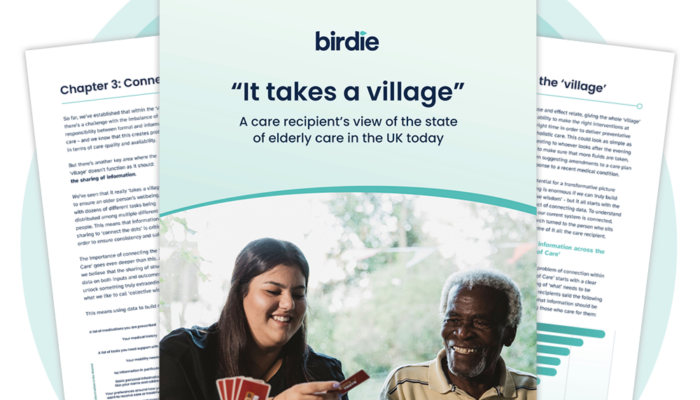Social care restrictions eased to allow unlimited visiting
Restrictions in place to prevent the spread of Omicron in adult social care are being eased out, as of today (31 Jan).
Plan B measures have been removed, following the success of the booster programme, allowing unlimited visiting for care home residents to return. Self-isolation periods have also been cut, so that care homes only have to follow outbreak management rules for 14 days, rather than the previous 28, with further reductions if tests return negative on days five and six.
The latest data from the UK Health Security Agency shows that the booster jab, which has now been administered to 86.5% of care home residents, is 92% effective in preventing hospitalisation.
“I know how vital companionship is to those living in care homes and the positive difference visits make, which is why we continued to allow 3 named visitors and an essential caregiver under Plan B measures,” commented Health and Social Care secretary Sajid Javid. “Thanks to the progress we have made, I am delighted that care home restrictions can now be eased further allowing residents to see more of their loved ones.”
Isolation periods for those in care following an emergency hospital visit will also be reduced from 14 to a maximum of 10 days, in line with the NHS and following the latest advice from the Scientific Advisory Group for Emergencies (SAGE). As of Wednesday (16 February), care workers will be asked to use rapid lateral flow tests before their shifts, replacing the current system, which included the use of weekly asymptomatic PCR tests.
“Thanks to the continued success of the vaccine roll-out, I am delighted we can ease restrictions in care settings and allow unlimited visits to ensure people living in care homes see all their family and friends,” said Minister for Care Gillian Keegan. “The changes announced today are backed by scientists, ensuring we all have more freedoms from coronavirus, including care home residents and their families.”
As set out in the Autumn and Winter Plan 2021, the government will continue to provide rapid lateral flow tests free of charge in the coming months, but universal free provision will end at a later stage as the response to the virus changes. However, essential caregivers should continue to be able to visit inside a care home, even during periods of outbreak affecting a care home.
“We welcome the government’s decision to ease social care restrictions,” said National Care Forum CEO Vic Rayner. “Care services have worked very hard to make visiting possible and the move to remove limitations on visiting in care homes brings them more into line with the easing of Covid restrictions of the wider population and the communities they serve.
“Whilst this policy change is really positive for people in care homes and their friends and families, care services will of course need to continue with all the Covid-related testing and PPE requirements for visitors,” Rayner added. “As we know, care providers are continuing to face very significant workforce pressures, with high levels of vacancies as well as staff shortages as a result of Covid-related absences, so this may impact providers’ ability to implement these changes at speed.
“We have heard the headlines, we now need to see the detail of how providers will be supported to put this policy into practice. We look forward to seeing the guidance as soon as possible so that care providers, residents and their families all understand what this policy actually means.”
Rayner expressed interest in the government’s plans for ongoing support and funding to the sector to help tackle the ongoing workforce pressures which may limit providers’ immediate ability to implement this policy.
Neil Russell, chair of care provider PJ Care, welcomed the end of visiting restrictions. “Visiting is an important part of our residents’ lives, as it is for their relatives, and it will be great to be able to start welcoming people back into our care centres, where it is safe to do so,” he said.
Russell also welcomed the reduction of self-isolation periods: “It seemed unreasonable that a resident had to isolate for 14 days, when the rest of the country could come out after five. I struggled to see the logic of keeping self-isolation periods so high.”
However, he expressed caution about government plans to replace weekly PCR tests for staff with pre-shift lateral flow tests from February 16.
“There are so many precautions that work,” he said, “lateral flow tests are part of those but should not be relied on exclusively as they are not 100% successful in picking up positive cases, so they need part of a raft of measures to help protect residents.”



